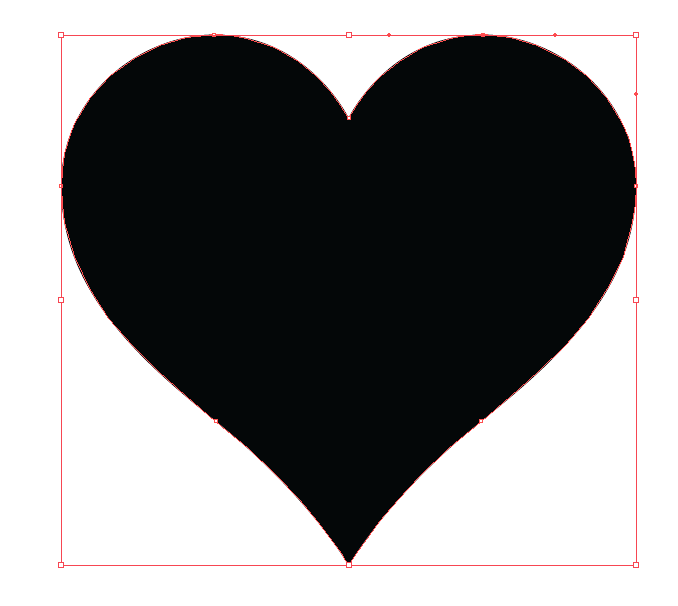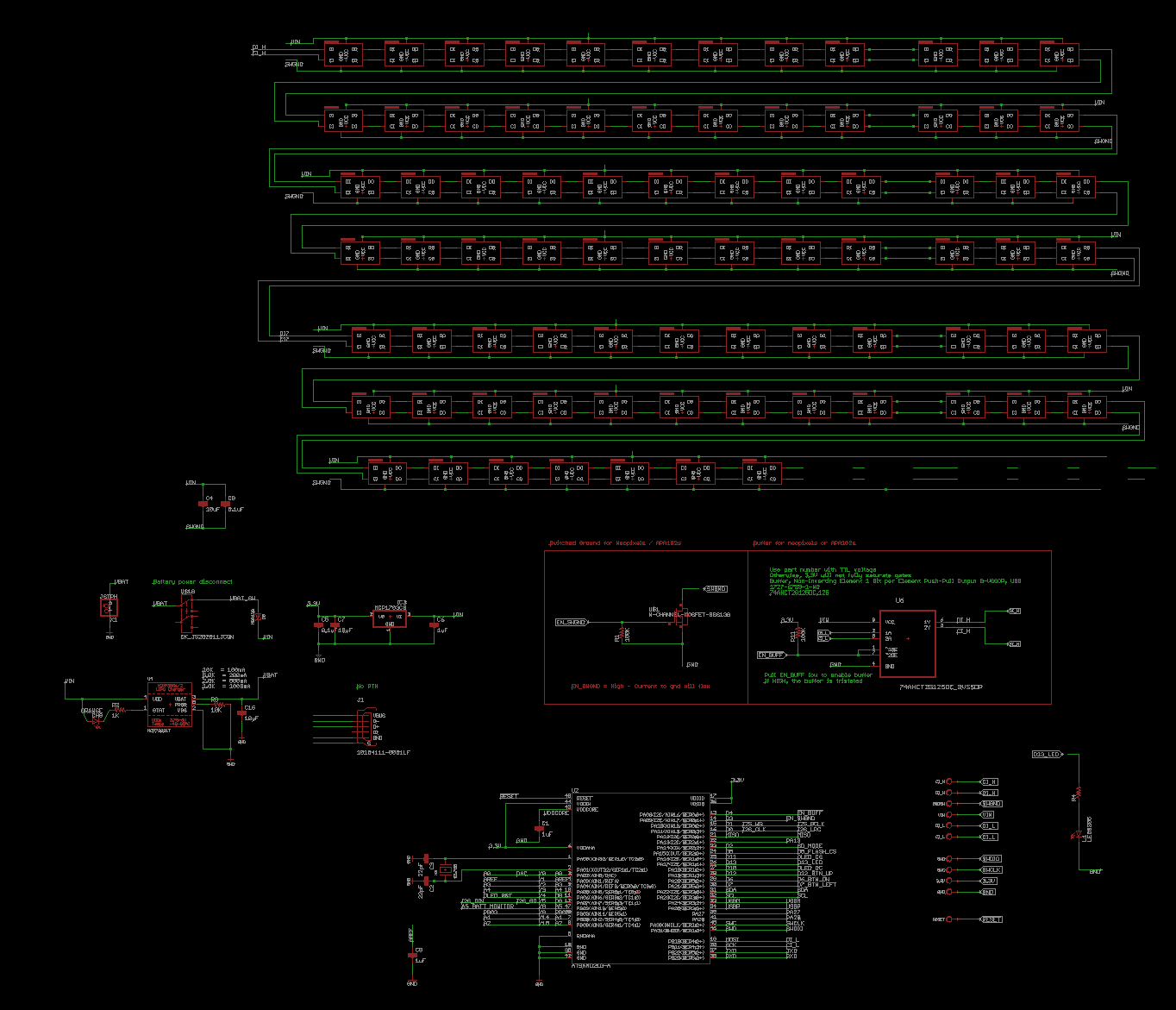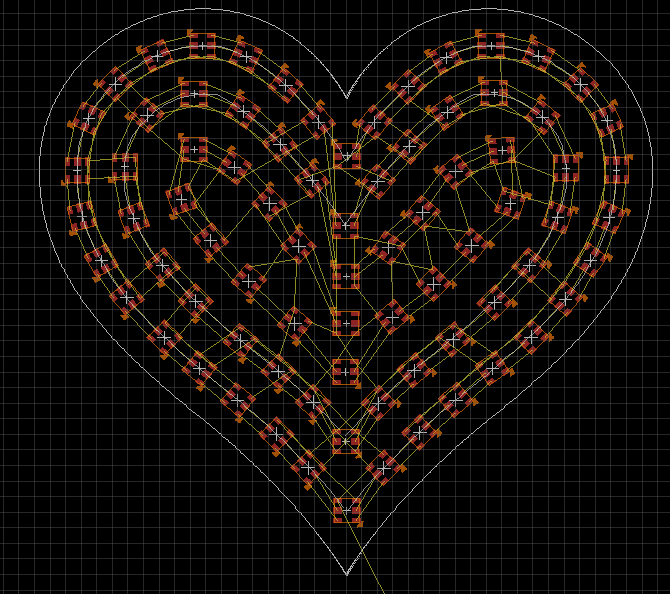Step one was a design. I've used APA102-2020s in some previous designs, and really love how small they are. However, I've never seen anyone incorporate them in a wearable.
First thing was developing the shape of the heart. I did this by looking at different heart shapes online and then using illustrator to make a simple curve. Frankly I didn't like nearly any heart shown by google, so ended up branching up a bit on my own with the shape:

Next, I used a painful process to add points and then export to DXF for eagle which ignores the curves and assumes straight lines connect everything. Grrr.

Now I used Illustrator to inset this shape a few ways to create the outlines. As you can see, this took some trial and error.

Now, it was time to lay out a schematic. Fortunately, I have footprints and plenty of sub-circuts already set up. These days, I am pushing a SAMD21-based design to OSHPark about once a week, and I use a very consistent net naming convention. It took me just a few minutes to paste in a level shifter, a MOSFET, a SAMD21 MCU and LiPo charger.

Now came the very very painful part - slowly laying out each LED in a position.
You might think I wrote a fancy ULP script to do this in Eagle to save me from the hours of manual labor to manually rotate each LED to exactly right place and to creating the right spacing along a path.
Sadly, I did not create such a ULP. :(
So after the better part of an afternoon, I had this:

The next challenge was laying out the entire board and routing. See the next journal entry.
 Jeremy Gilbert
Jeremy Gilbert
Discussions
Become a Hackaday.io Member
Create an account to leave a comment. Already have an account? Log In.